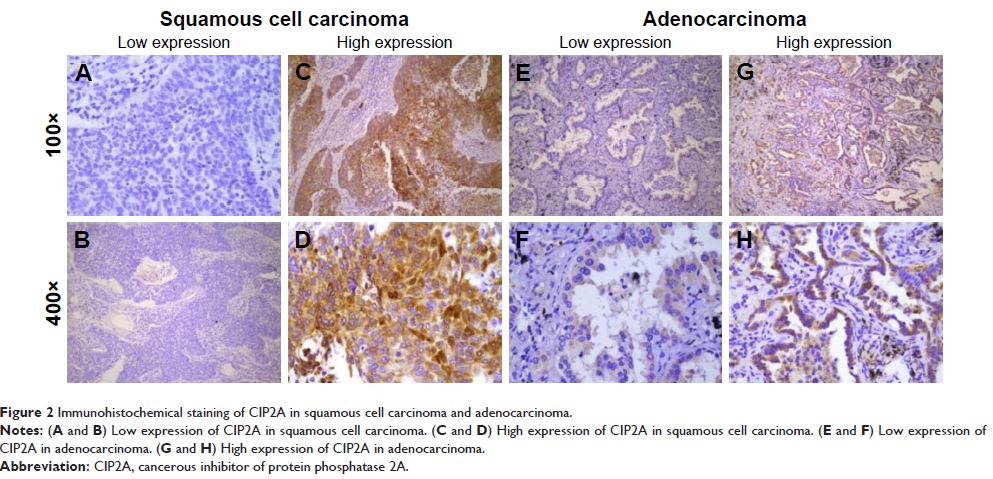100205
论文已发表
注册即可获取德孚的最新动态
IF 收录期刊
- 3.3 Breast Cancer (Dove Med Press)
- 3.4 Clin Epidemiol
- 2.5 Cancer Manag Res
- 2.9 Infect Drug Resist
- 3.5 Clin Interv Aging
- 4.7 Drug Des Dev Ther
- 2.7 Int J Chronic Obstr
- 6.6 Int J Nanomed
- 2.5 Int J Women's Health
- 2.5 Neuropsych Dis Treat
- 2.7 OncoTargets Ther
- 2.0 Patient Prefer Adher
- 2.3 Ther Clin Risk Manag
- 2.5 J Pain Res
- 2.8 Diabet Metab Synd Ob
- 2.8 Psychol Res Behav Ma
- 3.0 Nat Sci Sleep
- 1.8 Pharmgenomics Pers Med
- 2.7 Risk Manag Healthc Policy
- 4.2 J Inflamm Res
- 2.1 Int J Gen Med
- 4.2 J Hepatocell Carcinoma
- 3.7 J Asthma Allergy
- 1.9 Clin Cosmet Investig Dermatol
- 2.7 J Multidiscip Healthc

CIP2A 蛋白的高表达与 I-III 期 NSCLC 中的肿瘤侵袭性相关,并且与不良预后相关
Authors Cha GQ, Xu JY, Xu XY, Li B, Lu S, Nanding AB, Hu SL, Liu SL
Received 3 August 2017
Accepted for publication 11 October 2017
Published 12 December 2017 Volume 2017:10 Pages 5907—5914
DOI https://doi.org/10.2147/OTT.S148250
Checked for plagiarism Yes
Review by Single-blind
Peer reviewers approved by Dr Colin Mak
Peer reviewer comments 2
Editor who approved publication: Dr XuYu Yang
Abstract: The aim of this work was to examine the expression of cancerous
inhibitor of protein phosphatase 2A (CIP2A) in non-small cell lung cancer
(NSCLC) and analyze its correlation with clinical outcomes. CIP2A protein
levels were detected by immunohistochemistry (IHC). One hundred and eighty-four
of 209 (88.3%) primary stage I–III NSCLC specimens and 4 of 38 (10.5%) adjacent
normal lung tissue specimens expressed CIP2A protein. High expression of CIP2A
was detected in 38.8% (81/209) of the NSCLC specimens. Patients diagnosed
histologically with late-stage NSCLC (p <0.001) and
malignant nodes (p =0.001) exhibited high CIP2A
expression. Univariate analysis using the log-rank test identified CIP2A
expression as a prognostic predictor for overall survival (p =0.005). In multivariate analyses
using the Cox regression test, CIP2A expression, T stage, N stage, histological
type, and chemotherapy were identified as independent prognostic factors (p =0.007, 0.001, 0.003, <0.001,
and <0.001, respectively). Furthermore, Kaplan–Meier survival curves
demonstrated that high CIP2A expression indicated poor prognosis in the
subgroup of patients with squamous cell carcinoma (p =0.008).
Similar results were noted in the subgroup of patients with adenocarcinoma, but
the results did not reach statistical significance (p =0.084).
We also used univariate analysis and multivariate analysis to assess the
prognostic factors for overall survival in the subgroup of patients who
received postoperative chemotherapy. CIP2A expression was also an independent
prognostic factor in NSCLC patients who received postoperative chemotherapy (p =0.009), along with histological
type (p =0.001) and N stage (p =0.034). In conclusion, adding to
the accumulating evidence, our research suggested that the CIP2A expression is
associated with aggressiveness and correlates with poor prognosis in NSCLC. Our
findings also indicated that CIP2A might be a potential therapeutic target
against NSCLC.
Keywords: CIP2A,
non-small cell lung carcinoma, immunohistochemistry, chemotherapy,
radiotherapy, prognosis
